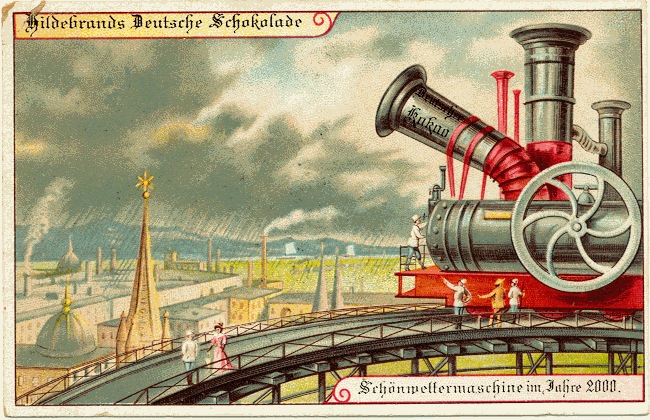China will invest $ 168 million in clouds so that more rain falls in the north-west of the country

The Chinese government has approved the allocation of funds in the amount of $ 168 million in a project to change the weather conditions in several regions of the country. The idea is to send rain clouds to the north-western regions of the country suffering from drought.
Officials calculated that the allocated funds will help develop a program to change the weather conditions in the region with a total area of 960,000 km 2 . The money will be spent on the purchase of four new "weather" aircraft, plus the upgrade of existing ones. It is planned to develop several hundred launch systems for “weather” rockets. 1856 sensors and sensors of various kinds are planned to be connected to digital control systems for centralized tracking of weather conditions in various regions of the country.
The usual "weather tactics", which has not changed for several decades - "sowing" into the clouds of catalysts (for example, dry ice) in order to either increase or decrease the amount of precipitation in a particular region. In China, this method of weather management has been used in recent years much more often than before. The Chinese work with the weather, in particular, in order to change the current conditions (temperature, cloudiness, etc.) in places of public events or to cool the air in some regions in the hot season. Another option is to “clean” air from smog.
')
Calling rain is impossible without active exposure to the clouds. This is the name of the physicochemical effect on them, in order to cause either precipitation (as Chinese scientists plan), or to provoke cloud dispersion without precipitation. The technology was developed quite a long time ago, in the late 1940s - early 1950s. In 1946, the scientist Bernard Vonnegut managed to discover the effects of silver iodide and lead iodide as centers of crystallization of water. This discovery was used to create installations of artificial dispersion of clouds.
Modern “weather services” are engaged in changing the phase state of the cloud when it is “seeded” with some reagents. This can be solid carbon dioxide, as mentioned above, as well as smoke of silver iodide or lead iodide. During evaporation of crushed carbon dioxide in supercooled water clouds, strong cooling is created (the temperature drops to -40 degrees Celsius and below) and supersaturation, which leads to crystallization. After such an effect, the clouds turn into mixed ones, acquiring colloidal instability. These clouds give precipitation. Sowing the clouds is, for example, aircraft.
Now experts can not only cause rain, but also counteract hail. To do this, in the supercooled part of the cloud responsible for the formation and growth of hail, the reagent is introduced by smoke. Silver iodide particles are captured by supercooled drops. As a result, the drops turn into crystals, becoming the “germ” of hail. There are more and more such crystals, and the hailstones simply do not have time to increase to large sizes. The avalanche-like formation of small hailstones in the cloud leads to the fact that when they fall out they melt in the warm part of the atmosphere, reaching the earth in the form of rain.

So imagined the management of the weather in the 19th century in Germany
Crystallization nuclei are partly frozen droplets that occur spontaneously at high supersaturation. With the help of solid carbon dioxide, artificial ice clouds can be obtained under the condition of complete absence of clouds. The aerosol of silver iodide smoke also leads to the freezing of supercooled droplets, its crystals (similar in crystallographic characteristics to ice) act as freezing nuclei or sublimation nuclei.
In cumulus clouds, for example, the solid phase and the enlargement of droplets are caused by the introduction of sprayed water into the clouds. Drops gradually grow due to coagulation. Another option is hygroscopic particles or drops of salt solutions. Now scientists have learned to influence the fogs, with the aim of scattering them. Supercooled fogs must be affected by solid carbon dioxide and the same smoke of silver iodide, which was discussed above. As a result, ice crystals form in the fog.
USSR scientists were among the first to attempt to control the weather. After the effectiveness of weather control methods was confirmed, they began to be used everywhere. In particular, the hail began to fight in this way, first in Georgia, then in Armenia, Moldova, the Caucasus, Ukraine and Central Asia.

Silver iodide smoke generator for seeding clouds
Beijing has its own plan for managing weather conditions until 2020. On the mainland of China, large projects are often carried out to change various natural systems, often with mixed results. This, for example, the creation of large dams on the main rivers, changes in river beds and much more. "Rain management" in this regard looks the most innocuous.
According to one of the managers of the weather project, weather management has increased the amount of precipitation by 55 million cubic meters from 2006 to 2016. The new project, according to scientists from the Middle Kingdom, will help move water resources, preventing drought and forest fires in several provinces of the country.
Source: https://habr.com/ru/post/401077/
All Articles